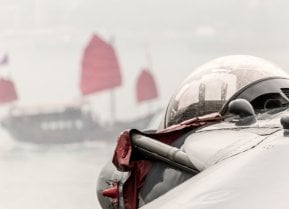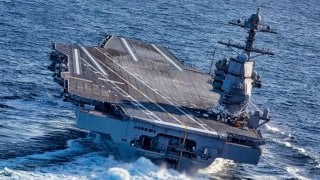Ford-Class Aircraft Carrier Is Most Expensive Ever (A Navy Mistake?)
The Ford-Class aircraft carriers, named after former U.S. President Gerald R. Ford, represent the latest in naval technology and power projection. With a total of ten ships planned, including the USS Gerald R. Ford (CVN-78), this new class features significant advancements such as the Electromagnetic Aircraft Launch System (EMALS) and advanced arresting gear.
Summary and Key Points: The Ford-Class aircraft carriers, named after former U.S. President Gerald R. Ford, represent the latest in naval technology and power projection. With a total of ten ships planned, including the USS Gerald R. Ford (CVN-78), this new class features significant advancements such as the Electromagnetic Aircraft Launch System (EMALS) and advanced arresting gear.
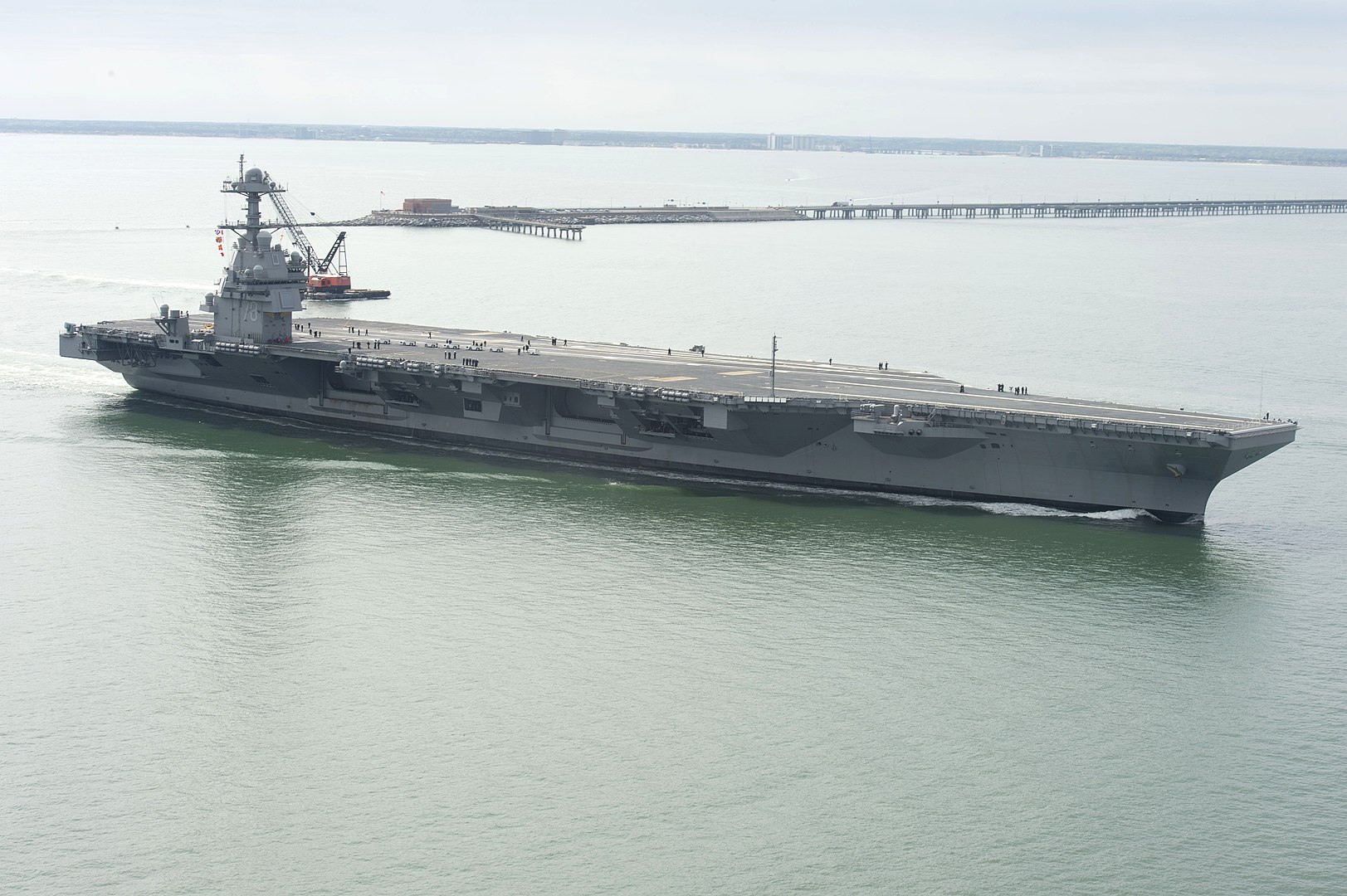
-Despite criticisms regarding their cost and vulnerability to missile attacks, these carriers remain crucial for U.S. naval strategy, especially in potential conflicts like a Chinese invasion of Taiwan.
-The Ford-Class promises enhanced capabilities, efficiency, and cost-effectiveness over its 50-year lifespan.
Ford-Class Carriers: A Modern Marvel or Costly Endeavor?
Former U.S. President Gerald R. Ford's most famous saying was "I Am a Ford, not a Lincoln. My addresses will never be as eloquent as Mr. Lincoln’s. But I will do my very best to equal his brevity and his plain speaking.” At the 1996 Republican National Convention, Mr. Ford — demonstrating that he was nowhere near the helpless buffoon that Hollywood Left actor Chevy Chase had depicted — put a humorous spin on that previous saying by taking a dig at then-POTUS Bill Clinton as a "convertible Dodge."
Fast-forward to the present day, years after President Ford's passing, and he now has something else in common with Abraham Lincoln (and that Bill Clinton can't lay claim to): having an aircraft carrier named for him. Meet the Ford-Class.
Ford-Class Carrier: President Ford's Naval Namesake
Actually, if anything, when it comes to naval naming honors, Mr. Ford has, dare I say, trumped (or one-upped, if you prefer) Mr. Lincoln; the former has had an entire class of aircraft carriers named for him, whilst Mr. Lincoln's naval namesake is an individual warship within the Nimitz class carrier fraternity. It's certainly apropos to name a naval vessel for President Ford, as he did indeed serve in the U.S. Navy, just like another former POTUS with an aircraft carrier namesake, John F. Kennedy. As with Jack Kennedy, Jerry Ford also did his Naval service in WWII, attaining the rank of Lieutenant Commander before separating in 1946 after four years of service.
Even more appropriately, then-LT Ford performed his sea duty on an aircraft carrier, the USS Monterey III (CVL-26), from June 1943 to December 1944, whereupon he served as the ship's assistant navigator, Athletic Officer, and AAA battery officer.
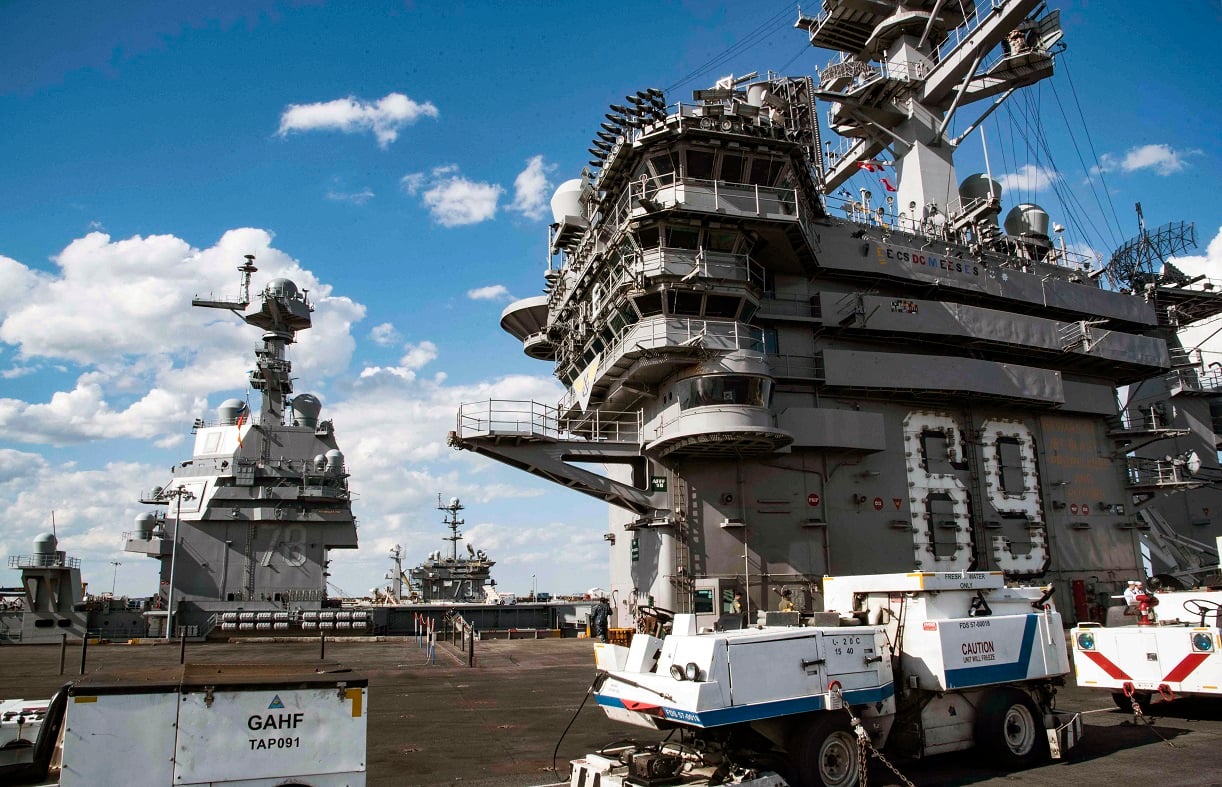
In the process, Jerry Ford got to see plenty of combat action. As per the Naval History and Heritage Command website:
"She [Monterey, that is] reached the Gilberts 19 November 1943, in time to help secure Makin Island. She took part in strikes on Kavieng, New Ireland. 25 December, as part of TG 37.2, and supported the landings at Kwajalein and Eniwetok until 8 February 1944. The light carrier then operated with TF 58 during raids in the Carolines. Marianas, northern New Guinea, and the Bonins from February through July 1944. During this time she was also involved in the Battle of the Philippines Sea on 29 and 30 April … Monterey then sailed to Pearl Harbor for overhaul, departing once again on 29 August. She launched strikes against Wake Island on 3 September, then joined TF 38 and participated in strikes in the southern Philippines and the Ryukyus. October through December 1944 were spent in the Philippines, supporting first the Leyte, and then the Mindoro landings."
Ford-Class: Worth the Price Tag?
A total of 10 ships are planned for the Gerald R. Ford carrier class.
Naturally, the lead ship in the class will be the USS Gerald R. Ford (CVN-78), the first new aircraft carrier designed in over 40 years.
Among the specifications of the Ford-class is a displacement of 100,000 tons, a length of 1,092 feet (333 meters), a beam of 256 feet (78 meters), a speed in excess of 30 knots (35 mph/ 56 kph), four SAM launchers, three Phalanx CIWS gun systems, a crew of 2,600, and an aircraft capacity of 75+.
Now, some pundits will question whether the new Ford-class is a worthwhile expenditure — $37.30 billion program cost and a $12.998 B unit cost — especially given the increasing vulnerability of surface warships to missile attack, as starkly demonstrated by the Ukrainians' sinking of the Russian Black Sea Fleet flagship Moskva; and the ever-increasing capabilities of the hypersonic missiles being produced by China and Russia.
To those pundits, I say this: the aircraft carrier still remains the primary power projection platform for the U.S. Navy, and that's not going to change anytime soon.
So if China do decide to invade Taiwan and we, in turn, decide to respond militarily, aircraft carriers are going to be our primary "9-11 response vehicle," so to speak, therefore our carriers need every little edge they can get in terms of 21st technological improvements.
Regarding those improvements, as noted by the Commander, Naval Air Force Atlantic (AIRLANT) website:
"Although it appears similar to a Nimitz-class aircraft carrier, there are many features that make Ford unique. First-in-class technology includes a new nuclear plant, the ability to generate nearly three times the amount of electrical power, innovative advanced arresting gear and the electromagnetic aircraft launch system (EMALS) … EMALS replaces the steam catapult system traditionally used to launch aircraft and will expand the aircraft launch envelope, paving the way for innovations in manned/unmanned aircraft as well as providing the opportunity for other technological advancements in the future."
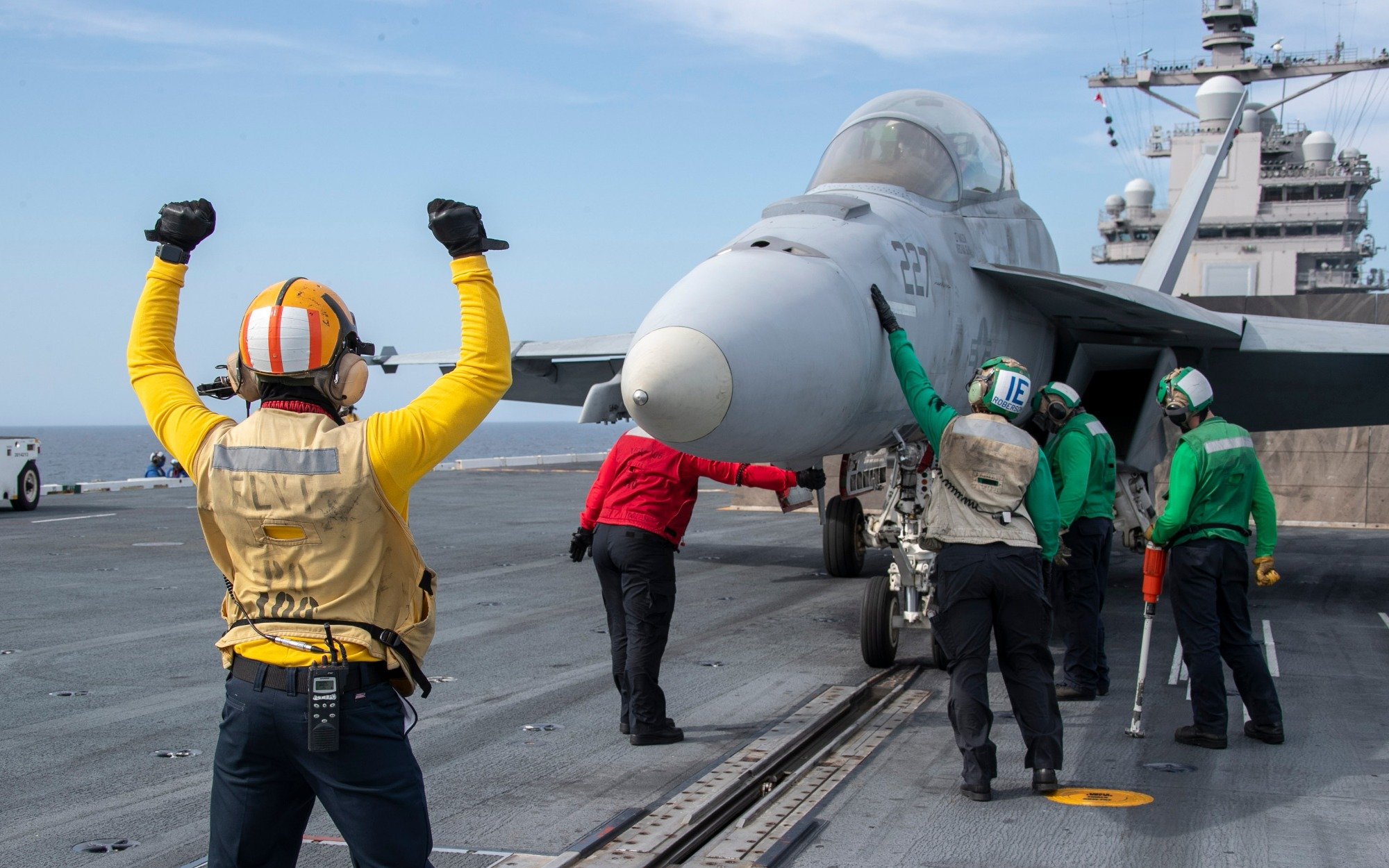
And then there's the benefit of cost-effectiveness, as noted by the Newport News Shipbuilding info page:
"The shipbuilders found value in every square inch of the ship, saving the Navy a projected $4 billion in ownership costs over the ship’s 50-year lifespan. The ship is equipped with two newly-designed reactors and has 250 percent more electrical capacity than previous carriers. The improvements will allow the ship to load weapons and launch aircraft faster than ever before."
Sounds pretty worthwhile to me.
About the Author
Christian D. Orr is a former Air Force Security Forces officer, Federal law enforcement officer, and private military contractor (with assignments worked in Iraq, the United Arab Emirates, Kosovo, Japan, Germany, and the Pentagon). Chris holds a B.A. in International Relations from the University of Southern California (USC) and an M.A. in Intelligence Studies (concentration in Terrorism Studies) from American Military University (AMU). He has also been published in The Daily Torch and The Journal of Intelligence and Cyber Security. Last but not least, he is a Companion of the Order of the Naval Order of the United States (NOUS). In his spare time, he enjoys shooting, dining out, cigars, Irish and British pubs, travel, USC Trojans college football, and Washington DC professional sports.
All images are Creative Commons.
